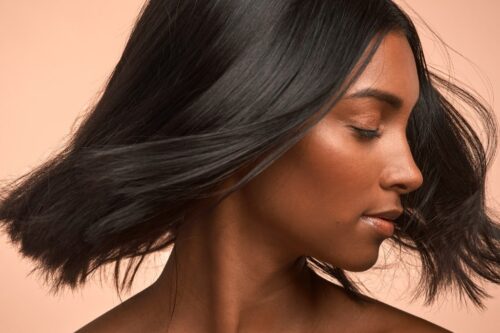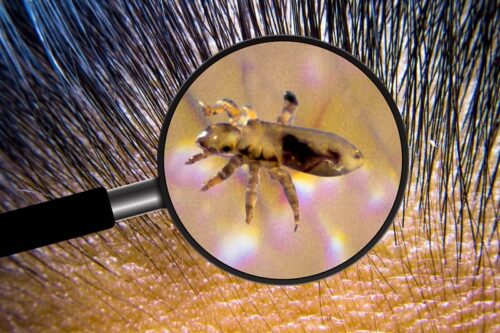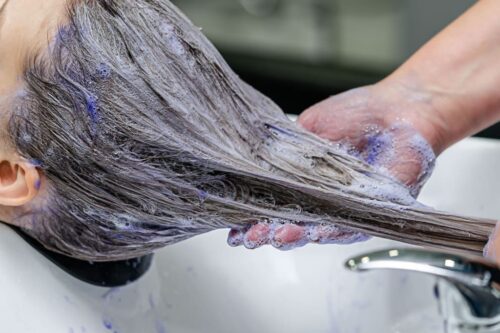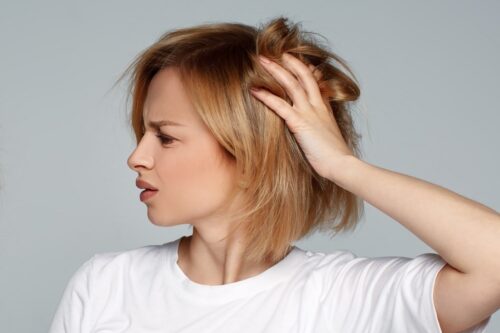Do you frequently dye your hair or use a lot of leave-in conditioning products? Have you changed your hair care routine recently or switched to an entirely new line of hair treatments? How do you know if your hair is damaged after all these treatments?
There are ways to know, which is primarily done by looking for specific characteristics. These signs of damaged hair indicate that your mane needs additional care or that you may need to change your choice of hair care products.
You may also need to consider how much attention you give your hair, including proper moisturizing, brushing methods, and the quality of shampoos and conditioning products.
Hair can become damaged for some reasons, including excessive exposure to the sun, lightning and coloring products, styling sprays and gels, and environmental exposure. If you’ve recently changed your diet or medication, these significant shifts in your daily life can impact the health and appearance of your hair as well.
There are essential characteristics to look for when there are concerns about hair damage, which indicate that you may need to change your hair care routine, methods, nutrition, and products. Is your hair easily tangled, or does it lack luster or shine?
The following signs are how you know your hair may be damaged. Some of these signs may not indicate damage, as they are attributes of specific hair types, which may require specialized oils or brushes to improve manageability.
1. Excessively Dry Hair
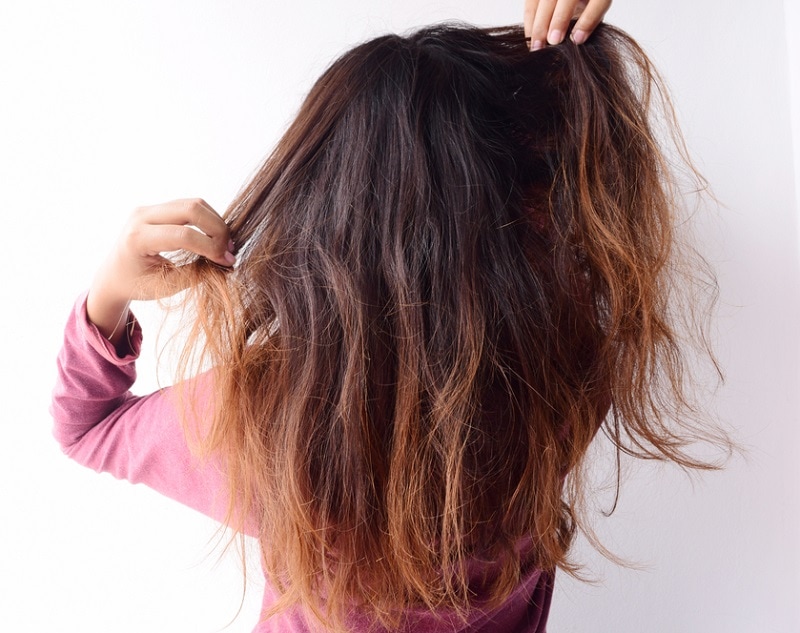
When your hair becomes excessively dry, this may occur following the regular use of dyes, bleach, and blow dryers.
It may also occur after too much sun exposure, especially if no hair conditioners or protection is used to prevent dryness. If you spend a lot of time outdoors in the sun or swimming, this will contribute to dryness.
2. Split Ends
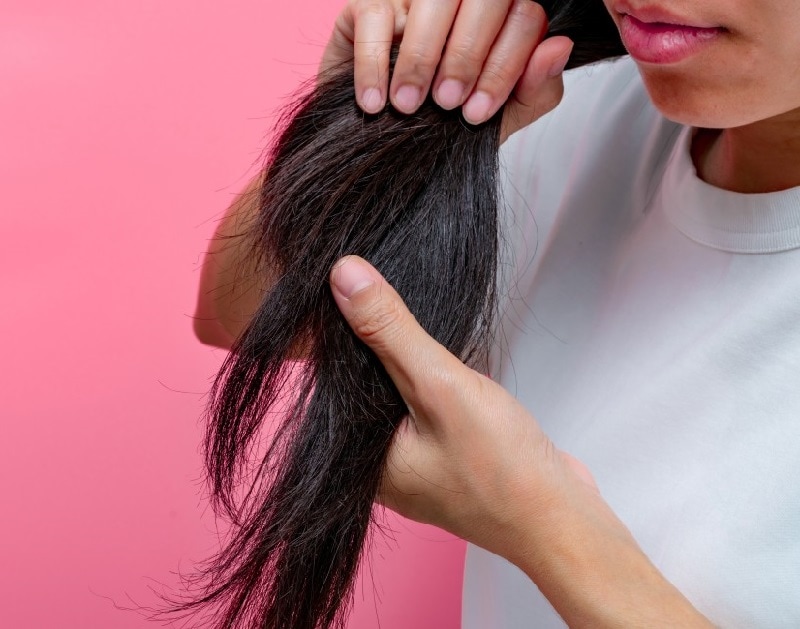
If your hair splits at the end, this is another way how to know if your hair is damaged. This is often remedied with a trim to remove the broken or split ends of your hair.
Removing the bottom one or two inches of hair will prevent the splitting of your hair shaft from further damage and keep the rest of your mane healthy.
3. Dullness, Lack of Shine
Hair without any shine or persistent dullness can be a sign of damage. This is usually due to using specific products that dry out the hair and strip the outer shaft of its shine and luster. Suppose you use hair dyes, perms, and other products that alter your hairstyle or color.
In that case, it’s essential to use moisturizing shampoo, conditioners, and treatments to improve the quality of your hair or avoid any hair-damaging products altogether.
4. Stiff Hair
When your hair becomes stiff, it can break easily, resulting in split ends and more significant damage over time. Stiff or breakable hair occurs due to aging and excessive exercise, especially when there aren’t enough nutrients and hydration in your diet.
5. Thinning Hair
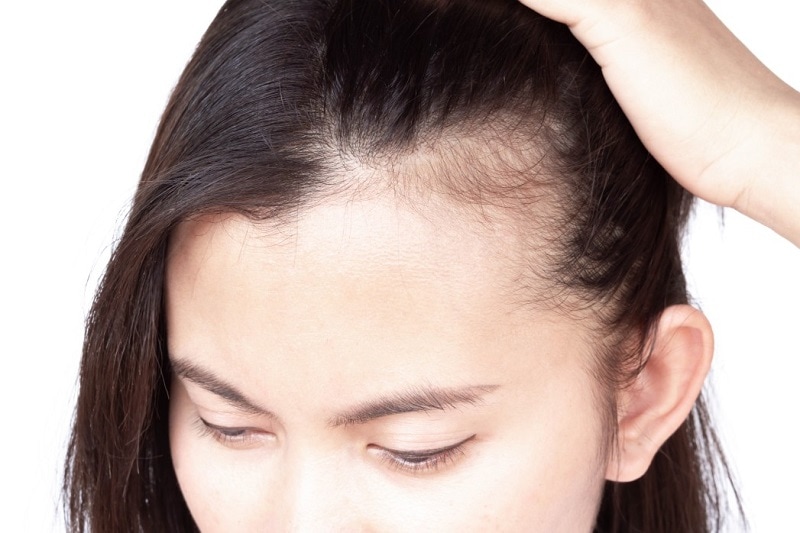
Thinning is another way to know if your hair is damaged, and the cause may be due to several factors, including a poor diet, illness or medical conditions, medication, or specific products. Excessive lightening or products with harmful chemicals may cause hair to be thin, which should be strictly avoided if you notice these results.
If you suspect that specific medication or health conditions may be the cause of hair loss or thinning, check with your doctor or medical professional for advice.
6. A Change in Texture
One of the ways of how to know if your hair is damaged: 15 signs is if there is a change in the texture of your hair. You may not notice a change in texture right away, though this is a significant sign of damage often linked to a lack of protein in your diet.
7. Hair Loss

Hair loss is a sign of long-term damage and usually doesn’t occur until you’ve noticed other characteristics that indicate an unhealthy mane.
Small amounts of hair loss are usually temporary and may occur due to the medication, outdoor elements, or unhealthy products. If hair loss is severe and persists, it’s essential to visit a doctor or specialist, as this may indicate a health-related issue.
8. Frizz
Not all frizzy hair is damaged, though if your hair is usually different and suddenly changes, it may be a sign of damage. This is usually caused by excessive hairdryers, irons, or products that dry out the hair.
9. Breakage
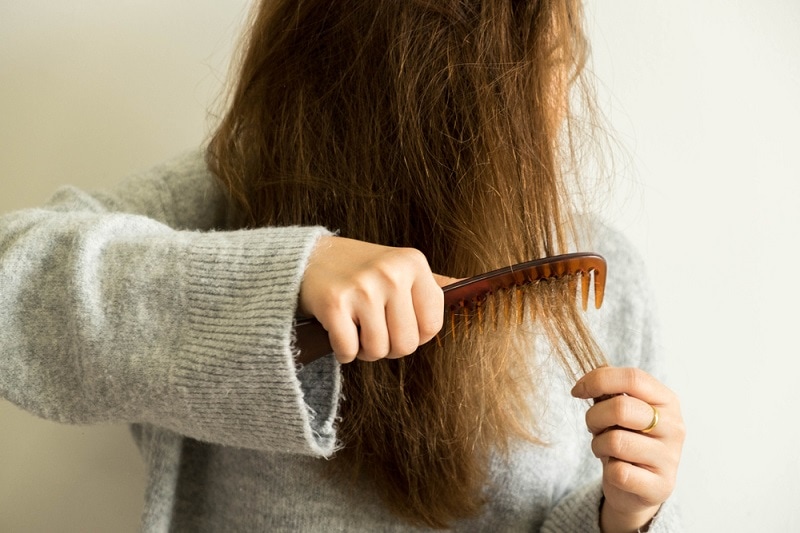
When your hair breaks off or is prone to breakage, this usually occurs when split ends are not trimmed, and the hair shaft is further weakened to the point of breaking off. This sign of damage can be easily avoided with regular trims and conditioners to prevent brittleness.
10. Limp, Weak Hair
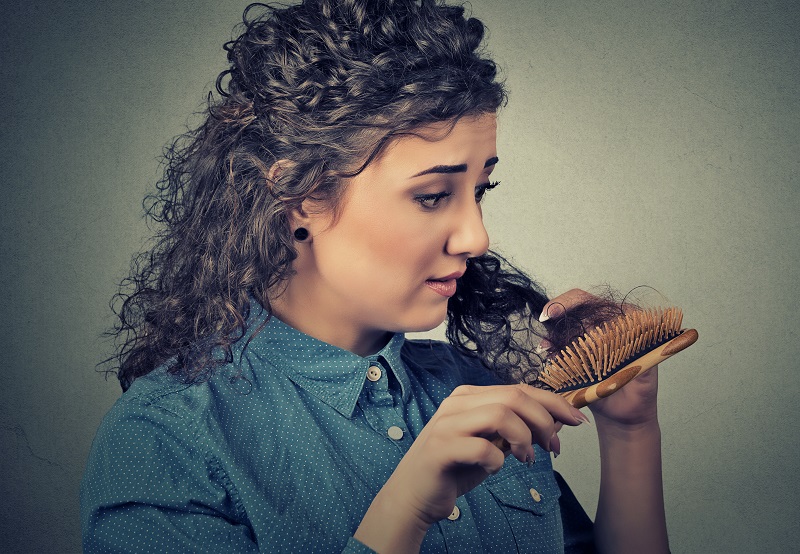
If curly hair becomes limp and loses its regular bounce or your hair is weak and doesn’t look shiny or strong, this is a sign that your hair is over-conditioned or treated with too many products.
When you use too much conditioner or other treatments, the cuticles in your locks become swollen due to the excess product and weigh the hair down.
If you cut down the amount of product you use simultaneously and regularly wash your hair, this will prevent limpness, which is a sign of over-processed hair.
11. Loss of Curls
When curls become thin and stringy, this can be a sign of hair damage. Some of the common reasons include diet, medical conditions, medications, and over-usage of hair products.
12. Patches of Shorter Hair
If your hair is not growing out consistently, this is another way to know if your hair is damaged.
Often, this patchy growth results from treating hair unevenly with bleach or strong chemicals in one area or spot more than others, which causes the patchy damage.
There may also be trauma or injury that may stunt hair growth in certain spots, which should improve once everything heals.
13. Excessive Tangling
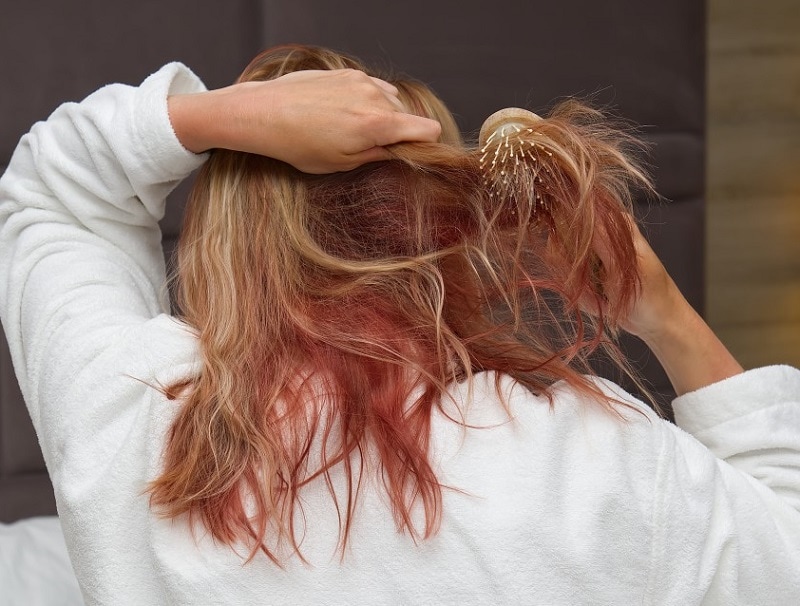
Tangling hair doesn’t necessarily mean it’s damaged unless it’s excessive and isn’t easy to brush or manage. Too many tangles occur when your hair is too dry and over-processed.
Typically, your hair shaft should be flat and smooth, though when it’s raised or swollen, it becomes hard to maintain and becomes easily knotted.
14. Rough Texture
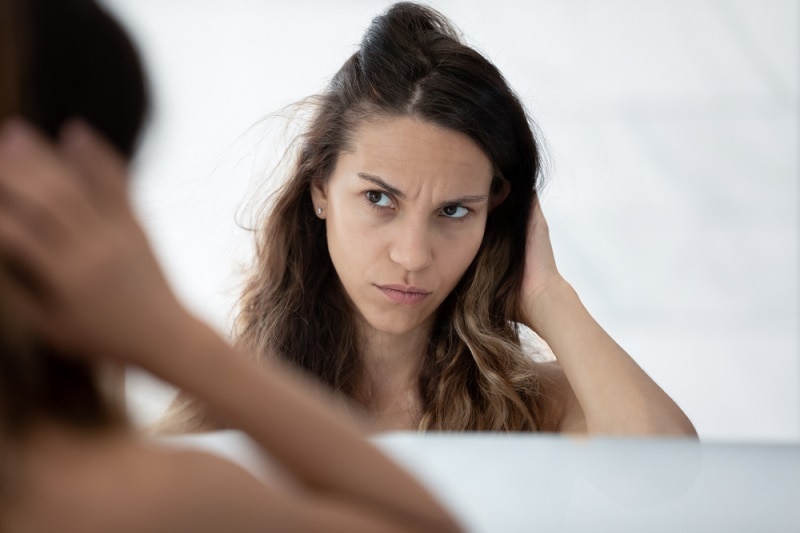
Some hair types vary in texture, ranging from smooth to coarse, though the importance is consistency. Suppose your hair is typically smooth and suddenly feels rough to touch.
In that case, this is likely due to damage from using too many products or not protecting your hair from sun damage or other environmental causes. When your hair feels rough and unhealthy, refrain from using treatments or products that harm the texture.
15. Fading Color
If the color of your hair fades or appears duller than usual, this may be damage or the effects of a hair dye or chemical treatment.
It’s essential to choose good quality products and read the instructions to avoid any adverse reactions to your hair. Some dyes do not work well with other products or may change the texture of your hair if it’s been previously dyed.
Preventing Hair Damage
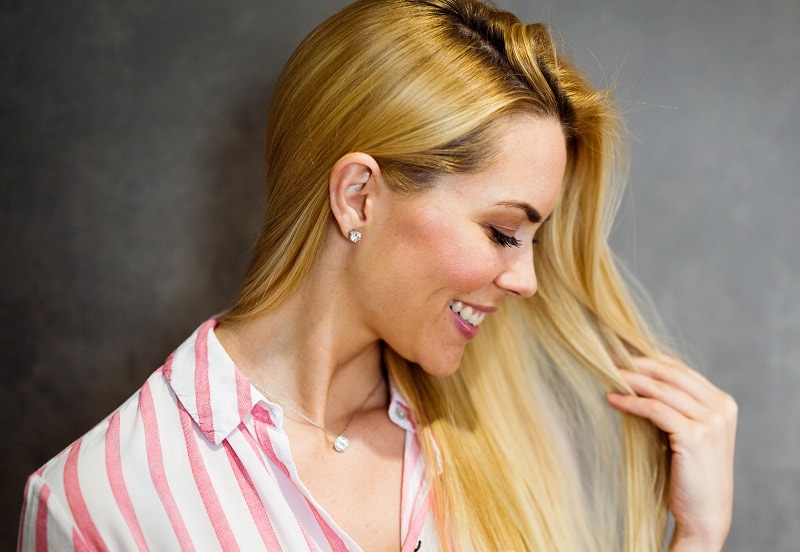
It’s relatively easy to prevent damaging your hair with a bit of research and extra care. Always purchase products that are of high quality and do not dry out or damage your hair.
Fortunately, many excellent products feature built-in conditioners and moisturizing oils to protect your hair so that any expected damage or effects on your hair is minimized.
Deep Conditioning
A deep conditioner or oil treatment, once or twice weekly, can significantly improve hair that’s been damaged over a long period. It’s also an excellent way to protect your mane and prevent damage from occurring in the first place.
A hair mask or deep conditioning treatment can replenish hair that’s beginning to dry out or just be treated with a dye or lightening product.
Sun Exposure
If you spend a lot of time outdoors, your hair will show the effects of excessive sun exposure and other elements, which can dry your hair or change it from shiny to dull.
Many people don’t realize that your hair, much like your skin, requires ongoing protection from the sun to avoid drying out and splitting at the ends.
Quality Products
Always invest in good quality hair products to avoid chemical reactions that damage or ruin your hair’s appearance. Even quality dyes, conditioners, and shampooing products may cause problems if used in excess or in combination with other products that don’t react well.
Consult with a hairstylist or beauty products specialist to inquire about which types of products work best for your specific hair type.
Summary
When it comes to hair care and maintenance, it’s essential to invest in good products that won’t leave your hair dry and over-processed. There are many good-quality products, including hairbrushes, conditioning creams, shampoo, and other items that contribute to a healthy mane.
There are great products that specialize in all hair types to prevent damage and avoid common problems that occur with the wrong type of treatments and hair care. Not only will you have the benefits of preventing damage, but you’ll have a shiny, healthy head of hair.


